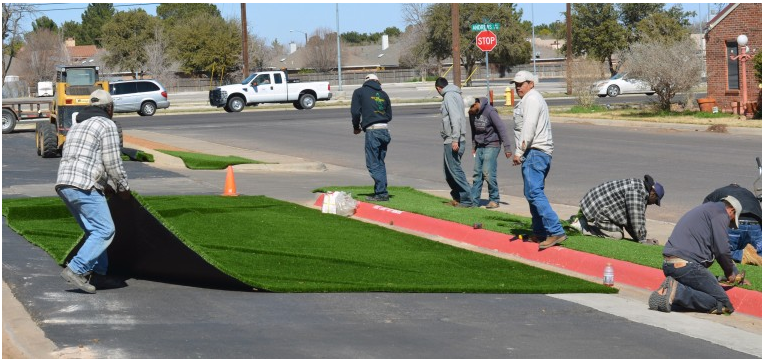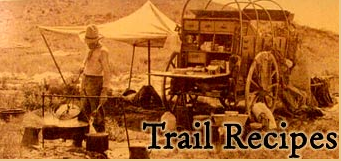|
AdvertisEments |
||
|
||
|
||
|
||
|
||
|
|
||
|
|
||
Western
Questions
Corner
What was Richard King’s master plan to staff his Ranch in South Texas ?
In what year did Montana try to get a resolution to preserve the range exclusively for cattlemen?

In light of drought, Midland looks to alternative landscaping
The ever-dwindling water supply and host of outdoor use restrictions are forcing some West Texans to consider alternative landscaping designs. Hot summer temperatures, persistent drought conditions, decreases in available water sources, prohibitive costs and restrictions are spurring new ideas in some cases, while in others switching to more sustainable native desert flora.
Despite this year's above average rainfall -- 1.18 inches of rain in 2012 compared to historical date average of 1.03 inches -- water tables still are dangerously low. Not only would the Permian Basin have to exit the drought, there would need to be enough rainfall to make up for last year's dry conditions. An ever-increasing population also adds constraints to the area's access to the life-sustaining commodity.
The drought aside, the West Texas reservoir system is more than 100,000 acre feet less than when originally established in 1961. Recently, the main reservoirs that supply water to the region have dropped from 500,000 acre feet of water to about 100,000 acre feet, according to the Colorado River Municipal Water District's historical tables.
Conditions are their worst in more than a generation. The last city to use the E.V. Spence Reservoir has discontinued to drain the lake because it is at only .5 percent capacity. The last of the great West Texas lakes, the O.H. Ivie Reservoir, is hovering around 17.5 percent and tasked with supplying Odessa, Midland, Big Spring and San Angelo, among others, with water. Recent precipitation is doing little to replenish the lakes.
The drought is exacerbating the danger. Usage levels are unsustainable and require municipalities to not only look for other supplemental sources, but also to fundamentally address how water is used. Several community leaders, including Mayor Wes Perry, are stressing the need for a landscaping cultural shift.
Innovation in desperation
Most forms of innovation take hold at the grassroots level. Several companies, like Alldredge Gardens and Top Notch Landscaping, started toying with the idea of installing low-maintenance artificial turf as a possible solution to increasing restrictions on outdoor water use by local governments.
Most cities started enforcing water restrictions last summer. As the drought persisted, the number of days and hours a homeowner could water kept decreasing. This week, Odessa announced residents will only be able to water outdoors for two hours a week starting April 1. Perry said Midland might follow suit. The limited amount of outdoor water likely will not be enough to sustain the lush, well-manicured lawns Midlanders have been used to. In face of adversity, innovation flourishes.
"Midland's residents simply don't want dead yards," said Josh Clark, manager for Alldredge Gardens' landscaping division.
To offset dwindling revenue streams, local landscapers are looking at synthetic alternatives.
Clark said all of Alldredge Gardens' recent jobs have been complete artificial renovations. The company exclusively is using a high-end artificial grass called EZ Turf. The massive, carpet-like squares are stitched together and have an underground irrigation system to stop pooling. The landscaping company has installed more than 30,000 square feet of the material in the past four months.
The chief landscaper is optimistic about this product as he rattled off its benefits: No need to water, no mowing, low maintenance, pet friendly, durable and almost fade-proof. Although the initial investment price for the artificial grass is about three times what his company would charge for a simple sod job, after about eight years the investment starts to pay dividends. Once the initial cost is covered, there is little more expenditure compared to those of a natural lawn. There is a 15-year manufacturer warranty and an estimated life-span between 20 and 25 years.
So far, most of 30,000 square feet of turf have been installed on residential property, but Clark says he sees more corporate interest. While on-site at an installation at Henry Petroleum on Andrews Highway this week, he demonstrated how time consuming and meticulous the work was. The relatively small job took a crew of about a dozen to complete. Some were laying the basework irrigation system, others were anchoring the turf and stitching pieces together. Once the grass was laid, stitched and anchored, silica sand and a rubber compound were added to keep the blades facing upward and add a natural bouncy grass-like feel to the synthetic material.
Clark said he has heard nothing but positive reviews from customers and expects the already high demand to increase once people see more of the turf throughout the city. Homeowner Victoria Wantland already was excited about her new yard and Top Notch Landscaping's Brad Tatum hadn't even finished his work. She said she learned of the product on Home and Garden TV and did a lot of independent research before deciding to make the switch. When she and her husband moved into their northern Midland neighborhood, their backyard was lush and green. But, because of watering restrictions, a large tree preventing direct sunlight and three dogs digging, the yard resembled a dirt lot with sporadic patches of grass.
"I'm just pumped to not have any more paw prints in my kitchen" Wantland said.
Tatum said Wantland's backyard, about 1,000 square feet, would take a crew of two about two full days because of how labor intensive the artificial turf was to lay and stitch. He said the meticulous work was to ensure no seams were showing so it resembled real grass. His relatively new company exclusively is installing the product. He described his business as "zero-scape" installation.
Aside from going artificial, there also has been an uptick in landowners seeking more native, desert landscaping options.
Native alternatives
Not everyone is onboard the plastic grass express. Although Kelly Cook, a partner with landscape architecture firm KDC Associates, said artificial is a valid sustainable option, he is hoping its adoption isn't widespread. He raised a few issues with some types of artificial turf -- but praised EZ Turf as high quality -- and had other issues with shoddy installation because of how difficult it is to install properly. His main point of contention centered around aesthetics. He compared the plastic grass to mini malls and parking lots. Cook said West Texans should be embracing native style plants and look at cities Scottsdale, Ariz., for inspiration, rather than east where there is more precipitation.
"In my more than 4,000 residential jobs since I started this company, I can count on two hands the amount of people that have asked for a desert, native landscape," Cook said. "Most of the time I get someone asking for a landscape they saw in Southern Living (magazine). This is not Dallas or Atlanta. There are limited water supplies and people should start embracing more sustainable landscape choices."
Although few opt for a natural route, the demand has increased over the past year, according to owners and managers at several Midland-based landscaping companies and nurseries. The demand for natural sod is almost nonexistent, said Homero Galindo, owner of Sandy's Nursery. He said more people are asking for gravel and rock to make beds. Native desert plants such as cactus are gaining popularity. Galindo said the drought has hurt his business, but in response he is further diversifying the type of flora at his nursery. He is encouraging more customers to consider heartier trees, like live oaks, that don't require considerable amounts of water.
Clark said Alldredge Gardens is seeing an uptick in desert plants. Last year he started to notice a more native trend and said since then, it has continued to grow. He said he wasn't satisfied just getting the basic desert plants and his company is seeking more diverse and interesting styles of plants. "In the end, these types of decisions will be better for Midland long-term," Clark said about the alternative landscaping styles available.
Outdoor living rooms
Other options Midlanders have, Cook said, are outdoor living spaces composed of trees, beds, bushes, rock and pathways. The style has exploded since the advent of HGTV and other DIY blogs and publications. Some are more basic designs, but others incorporate fire pits, massive outdoor kitchens and lounge areas. Aside from water management statistics -- which Cook said were improvements -- he said the outdoor living spaces were more aesthetically appealing than acres of flat grass.
Cook described a typical outdoor backyard with 26 irrigation spray heads. After quickly doing the math, he said a system operating four times a week for 15-minute increments during growing season and a water cycle of two times a week for 15-minute cycles during the winter season will use about 189,000 gallons a year. In contrast, he said water usage for an outdoor living room using a new water method becoming popular with many landscape architecture firms: Netafim Drip Lines.
The lines are long subterranean hoses that slowly drip water rather than spraying it throughout a yard. More than 60 percent of water used on irrigation spray systems is lost because of blow off, runoffs or evaporation, he said.
"It's all about using innovation to save resources," he added.
An outdoor living area using the Netafim Drip Line requires only 3,648 gallons for optimal use, a literal drop in the bucket compared the 189,000 needed under the average current setup, Cook said.
Although none of these answers will be right for everyone, a collection of water-reducing outdoor landscape designs collectively will lower Midland's water use. Regardless of which option Midlanders choose, it will be a step toward prolonging Midland's limited life-sustaining commodity until other sources of water can be tapped, developed and fully realized.
Article by James Cannon. James can be reached at [email protected]

Home <> Western Gallery <> Western Dictionary <> Cowboys <> Reining
Western Store <>Western Writers <> Western Stars <> Western TV <> Country Music <> Guns <> Western Vacations




